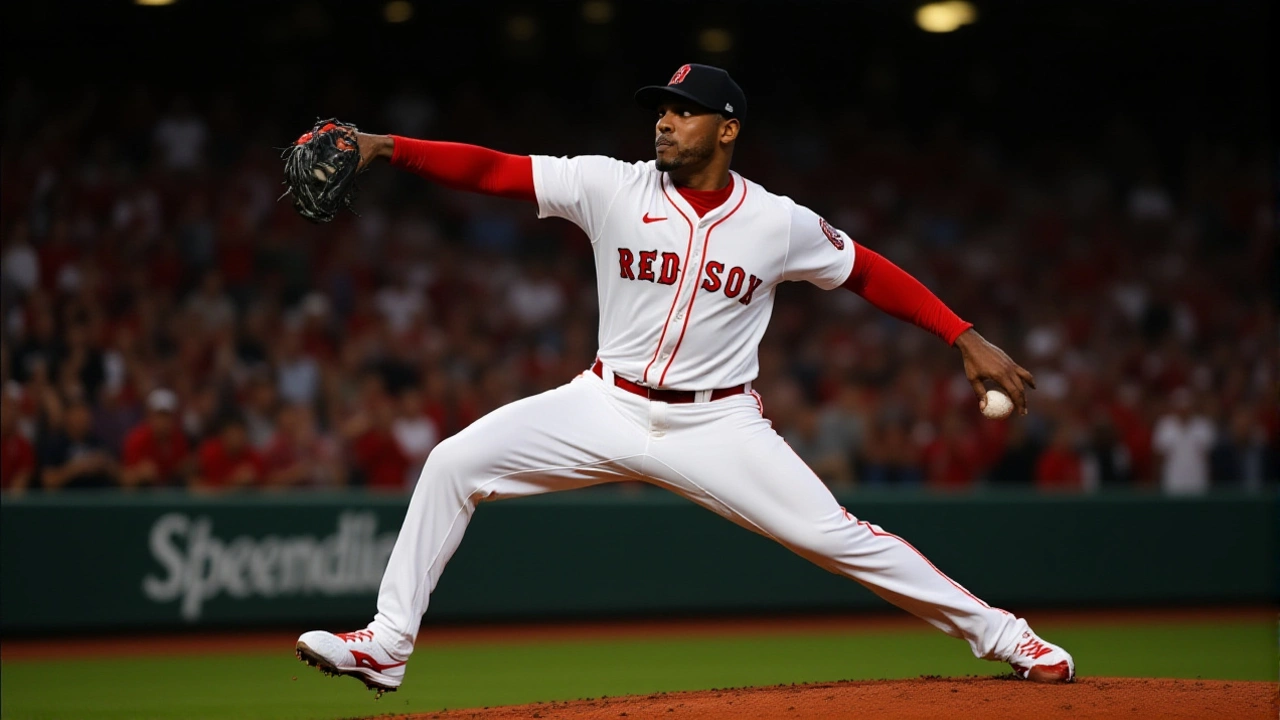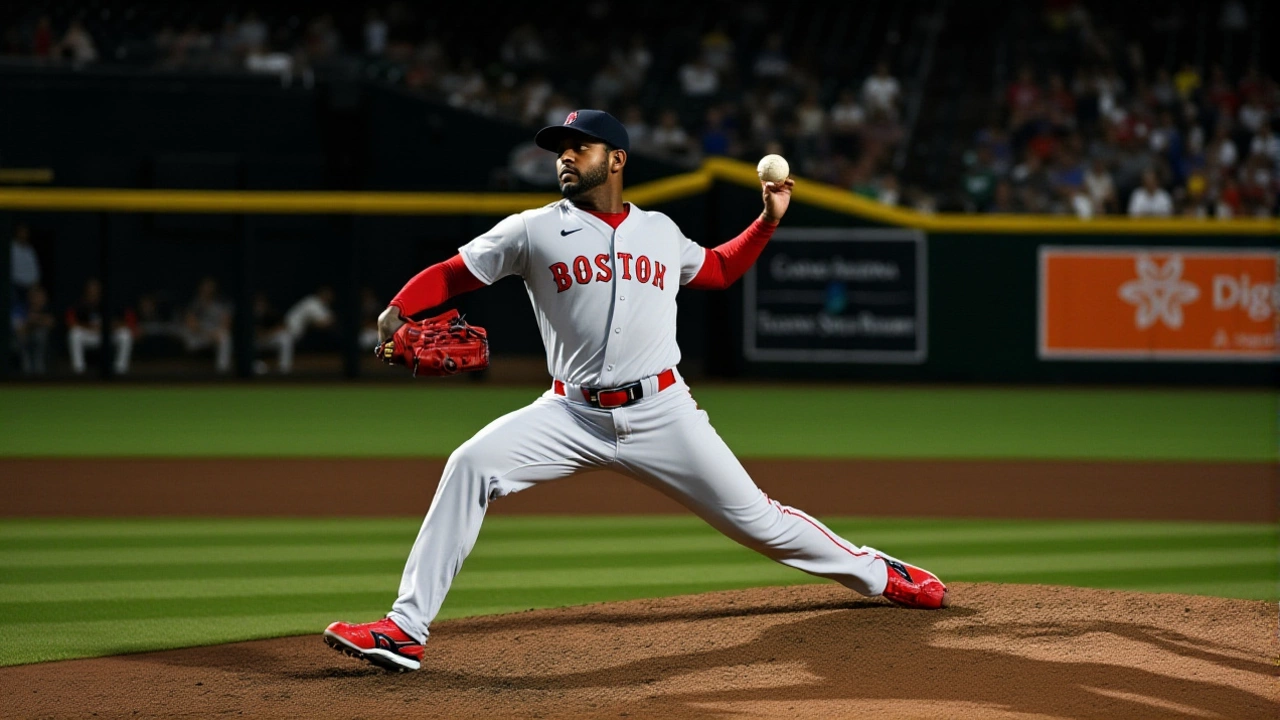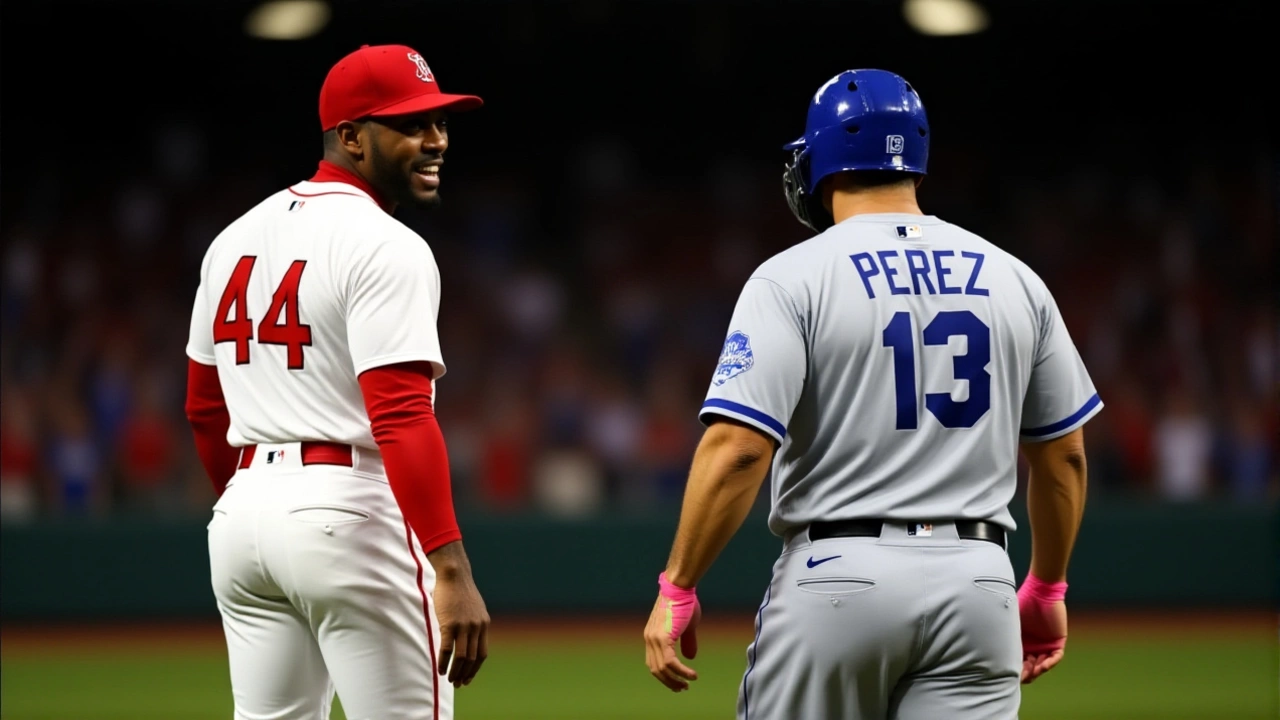When Aroldis Chapman, closer for Cincinnati Reds was struck in the face by a line drive off the bat of Salvador Perez, the catcher for Kansas City Royals, the incident sparked a flurry of concern across Major League Baseball. The blow occurred during the sixth inning of a spring‑training matchup at Surprise Stadium in Surprise, Arizona, on March 19, 2014. Bases were loaded, the Royals led 6‑3, and Chapman was winding up his signature 99‑mph fastball when the ball ricocheted straight into the bridge of his nose and the socket above his left eye.
Background: Aroldis Chapman’s Rise and the Spring‑Training Atmosphere
Chapman, a Cuban‑born fire‑baller who debuted with the Cincinnati Reds in 2010, had become one of the league’s most feared closers by 2014, boasting a career ERA under 2.00. His reputation for delivering triple‑digit fastballs made him a cornerstone of the Reds’ bullpen, and his presence in Arizona was a reminder that the season’s biggest battles often begin months earlier in the desert heat. Spring training, while low‑stakes, is a proving ground where veteran arms fine‑tune mechanics and younger players earn trust.
Meanwhile, Salvador Perez, a seasoned defensive stalwart for the Royals, was in the midst of a contract year that would eventually secure him a long‑term deal. The Royals, fresh off a 2013 playoff run, were looking to cement their roster, and Perez’s hard‑hit bat was a key component of their early‑season offense.
What Exactly Happened on That Night?
With two outs and the bases jammed, Chapman delivered a fastball that seemed ordinary—until Perez’s bat met it. The line drive sliced through the air at roughly 102 mph, directly into Chapman’s left cheek. The impact sent the pitcher sprawling backward, his body rolling on the field as the ball skittered into foul territory. Chris Cuccione, the umpire crew chief, conferred with both managers and agreed to end the game early for safety.
Witnesses described a scene that resembled a movie stunt. Chapman’s legs continued to move, instinctively reaching toward the ball even as he hit the ground. He never lost consciousness, but the force shattered the bone bridge of his left eye and fractured his nasal passage. A mild concussion was also diagnosed, though his vision remained intact.
Immediate Medical Response and Hospitalization
Paramedics rushed Chapman to Banner Good Samaritan Medical Center, where X‑rays confirmed multiple facial fractures. Surgeons inserted a titanium plate and screws to stabilize the area above his eye—a procedure that typically requires a six‑to‑eight‑week recovery for a pitcher.
Chapman’s father, who sat in the stands, was the first to comfort his son on the mound and escorted him to the ambulance. In the hospital, fellow Cubans Francisley Bueno and Brayan Pena stopped by, offering a familiar voice in an unfamiliar environment.
Reactions from the Royals, Reds, and the League
Salvador Perez visited the Reds’ pitcher later that evening, expressing genuine remorse. “I’m sad because he won’t be ready for Opening Day. It’s not my fault—I was just doing my job, he was doing his job,” Perez said the next morning. Royals pitcher Francisco Bueno also stopped by, underscoring the camaraderie that exists even among rivals.
Red’s manager Mike Matheny (not marked as primary) praised Chapman’s resilience, noting the player’s upbeat attitude during his hospital stay. The team released a statement that Chapman’s surgery went smoothly and that he was expected to return to full strength.
MLB officials, meanwhile, recalled their January 2014 approval of a padded cap designed to shield pitchers from facial injuries. The cap, however, received criticism for being bulky and hot, raising questions about whether it could have prevented Chapman’s specific injury, which occurred below the cap’s protective rim.

Recovery Timeline and Chapman’s Return to the Clubhouse
Chapman was discharged on March 22, just three days after the operation, and visited his teammates at the Reds’ Goodyear training complex on March 23. Despite visible swelling, two black‑eye bruises, and a noticeable scar across the bridge of his nose, his spirits were high. He sported a black hat emblazoned with a golden praying‑hands emblem and a metallic‑sleeve T‑shirt that drew cheers from the group.
Through interpreter Tomas Vera, Chapman explained that watching the video of the incident repeatedly helped him stay positive: “Every time I see it, I feel really happy because it could have been worse. I have no pain at all, and my progress has been great.” Team doctors projected a full recovery, and Chapman hinted that he hoped to be back on the mound before the regular season began.
Broader Safety Debate: Is Headgear the Answer?
The incident reignited a long‑standing debate about mandatory protective headgear for pitchers. While the padded cap was designed to mitigate facial fractures, many pitchers argued it compromised comfort and visibility. Some analysts suggested a redesigned, lighter composite material could offer protection without the heat buildup.
Safety advocates pointed to statistical data: between 2000 and 2013, there were 34 reported cases of pitchers suffering facial injuries from line drives, with an average recovery time of 4.2 weeks. Chapman’s injury, requiring surgery and a six‑to‑eight‑week timeline, underscored the variability and potential severity.
MLB’s Health, Safety & Security Committee promised to revisit equipment standards during the upcoming off‑season, noting that any change would need to be tested in spring‑training environments before a league‑wide rollout.
What This Means for the Reds and the Royals
For Cincinnati, Chapman’s absence at the start of the regular season forced the bullpen to reshuffle, giving younger arms an unexpected chance to prove themselves. The Reds eventually turned to veteran Ryan Madson as the interim closer, a move that paid dividends in early games.
The Royals, while apologetic, had to reassess their own protective measures for catchers and infielders after the incident. Their front office announced a review of batting helmets, aiming to reduce the risk of similar accidents.
Key Facts
- Date of incident: March 19, 2014
- Location: Surprise Stadium, Surprise, AZ
- Injured player: Aroldis Chapman (fractured facial bones, mild concussion)
- Cause: line drive by Salvador Perez
- Recovery: surgery with titanium plate; expected 6‑8 weeks

Frequently Asked Questions
How did the injury affect the Reds' bullpen at the start of the season?
With Chapman sidelined, Cincinnati turned to veteran reliever Ryan Madson as an interim closer. Madson recorded five saves in the first two weeks, buying the team time to evaluate younger arms like Elías García.
What protective equipment does MLB currently require for pitchers?
As of 2014, MLB approved a padded cap that covers the head but not the face. The league continues to study alternatives, and no mandatory facial guard is in place yet.
Did Salvador Perez face any disciplinary action for the hit?
No. The play was deemed an accidental line drive. Perez visited Chapman in the hospital, offered apologies, and faced no fines or suspensions.
How common are facial injuries to pitchers in MLB?
Between 2000 and 2013, MLB recorded 34 pitcher facial injuries from batted balls. The average time on the disabled list was about 4.2 weeks, but cases requiring surgery, like Chapman’s, are rarer.
When is Chapman expected to be back on the mound?
Team doctors projected a six‑to‑eight‑week recovery. Chapman aimed to be ready for Opening Day on March 31, 2015, though the exact timeline would depend on his pain levels and vision checks.
